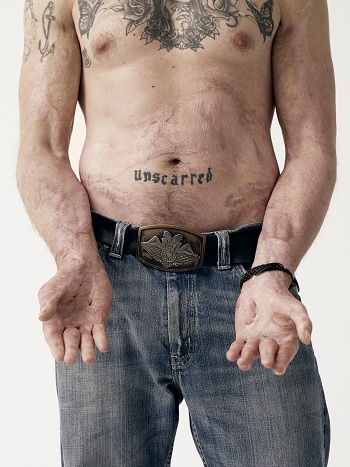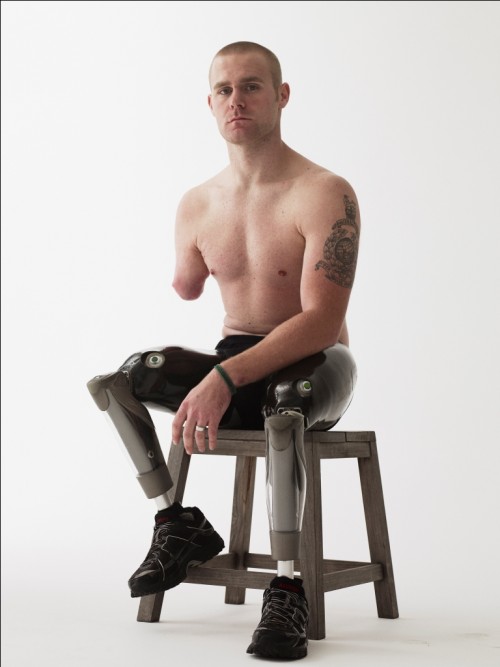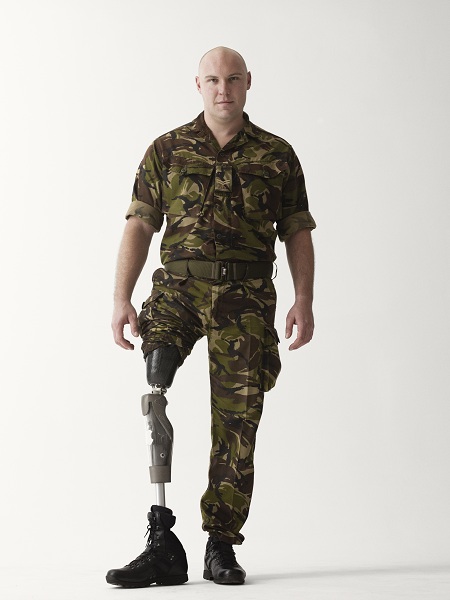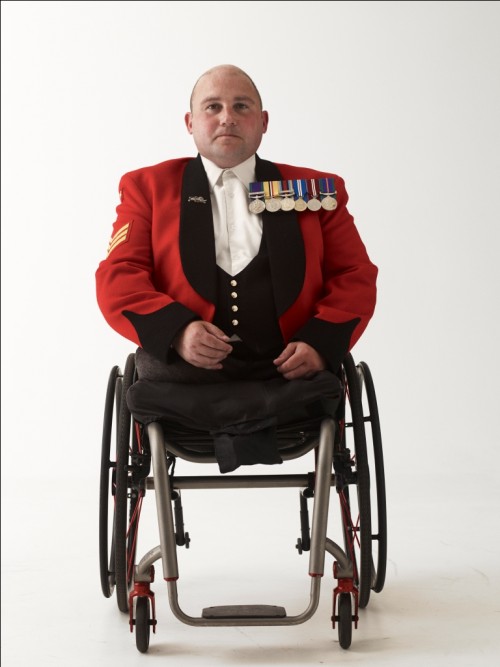I saw some new photography work by Bryan Adams a short time ago ago where he photographed wounded soldiers. The images of wounded soldiers were stark and I wanted to ask Bryan a few questions about the new work. What follows is a quick Q&A about Bryan’s new work called Wounded: The Legacy of War.

Wounded — Karl Hinett © Bryan Adams
Wounded: The Legacy of War — Q&A with Bryan Adams
Ph.ca - I’ve been following your photography for a while and this latest work is the ‘rawest’ work of yours I’ve seen thus far. Can I ask what drew you to this subject matter?
ba: I felt compelled to do something for these guys as I was never happy that we went to war in the Middle East. I was fortunate to have meet a journalist called Caroline Froggatt who wanted to do something and she was acquainted with some of the soldiers already, so the project started from that.
Ph.ca - Why photograph wounded soldiers?
ba: I want to create photos of the time and document as many people as I could that had incurred these severe war injuries in order to raise awareness to their plight and also show people a side of the horror of war that is often concealed from everyday media. The long term idea was that perhaps it could maybe be an exhibition or maybe even a book down the road. All of that happened thankfully in part to my publisher Steidl who saw the beauty in the photos and agreed to make the “Wounded — The Legacy of War” book with me. It’s now its touring the world as an exhibition.

Wounded Mark Ormrod © Bryan Adams
Ph.ca –How long did you photograph each veteran?
ba: For an hour at the most, then we would sit and have a chat and film that, I’ve not even looked at the interview footage, it’s just archived. Sometimes these guys would stay over at my house as they had come great distances from the North of England and even Scotland to be involved and it was too much to travel there and back in a day.
Ph.ca - How long did this project take from start to finish and where were the photographs taken?
ba: schedules were always being sorted out, I suppose the whole thing took nearly 5 years, it was very on and off. Initially it wasn’t easy to find subjects that would agree to being photographed, but once a few subjects had agreed and participated, recommending their friends became normal and the word got out.
Ph.ca - All of the photographs that I’ve seen from this series highlight the veterans’ wounds, versus playing them down through posing techniques as other photographers have often done. Was the posing of the subjects a collaborative process or solely under your direction?
ba: it was all ultimately under my direction, however they were welcome to show as much as they liked and I always hoped they would show as much as possible.
I would show them what I had done with other soldiers, and usually once they saw what was going on, the shirts would come off and the wounds became very apparent.

Wounded Rory Mackenzie © Bryan Adams
Ph.ca - Did some veterans have trouble exposing their wounds so boldly?
ba: Only one as I can remember who didn’t want to take off his prosthetic limb. I never asked why.
Ph.ca - Was it an emotional/cathartic process for some veterans?
ba: I think they were curious that someone like me was doing something like this, but I’ve had a lot of positive conversations with them since and the reactions have been incredible. Too many to mention here.
Mostly to do with seeing themselves as a vehicle to help other people, the unselfishness was humbling, let me tell you.

Wounded Rick Clement © Bryan Adams
Ph.ca - Our readers will want to know - Can you describe the camera gear and the lighting gear you used to create these photographs?
ba: It’s all shot in my daylight studio using natural light which I would drape off to create the amount of light for each guy. Occasionally if the studio got too dark in the late afternoon, I would bounce a light into the wall to give me a stop or two and mix it with the daylight. There was never a direct source of light it was always diffused. I used a Mamiya RZ camera with a Phase One back.
Ph.ca - Given that the legacy of war will continue, and there will be no shortage of future wounded veterans, will you be adding to this body of work, or is this a closed project?
ba: it’s closed for now, especially now that the book is done.
Ph.ca - What additional photography projects are on the horizon?
ba: another book of subjects I’ve worked with is being planned, but it may be another year before it’s ready.
—————————–
I’d like to thank Bryan Adams for taking the time to answer this Q&A.
30 images of Bryan’s new work are on exhibit at Somerset House from 12th November 2014 – 25th January 2015. The photography book Wounded: The Legacy of War, Photography by Bryan Adams, Edited by Caroline Froggatt is available here.


